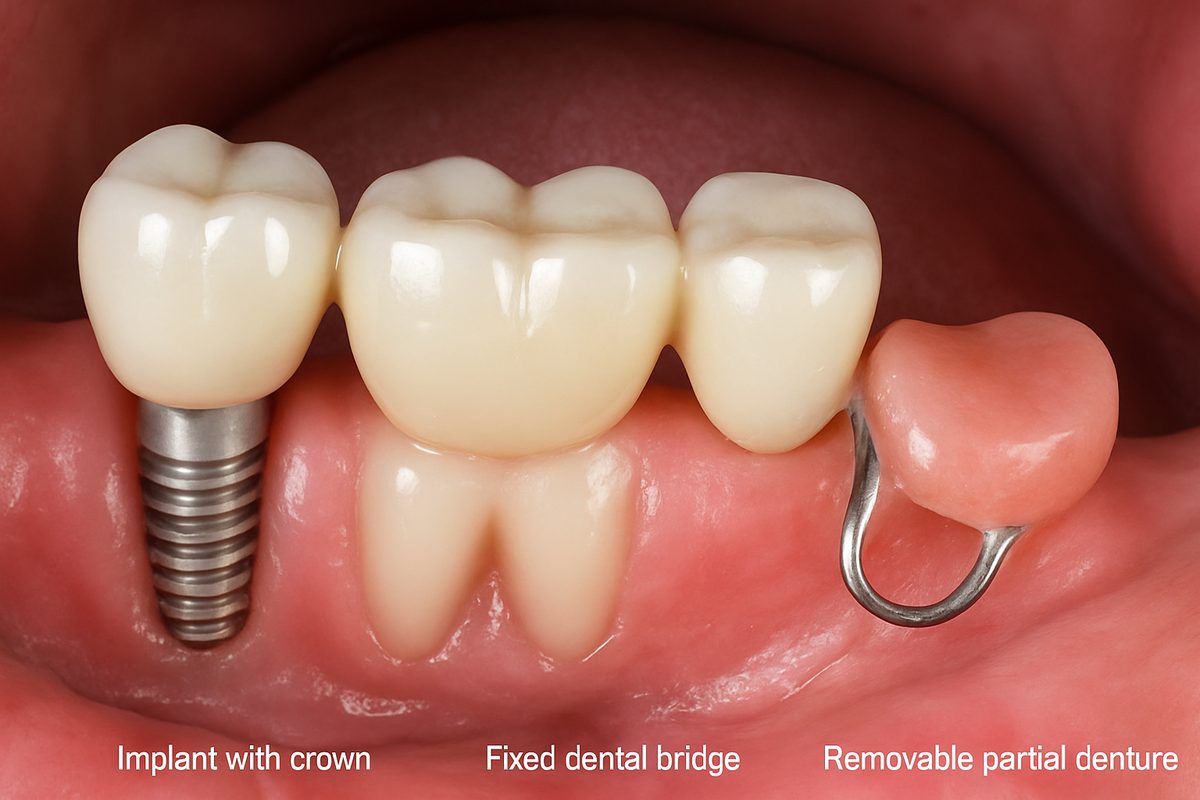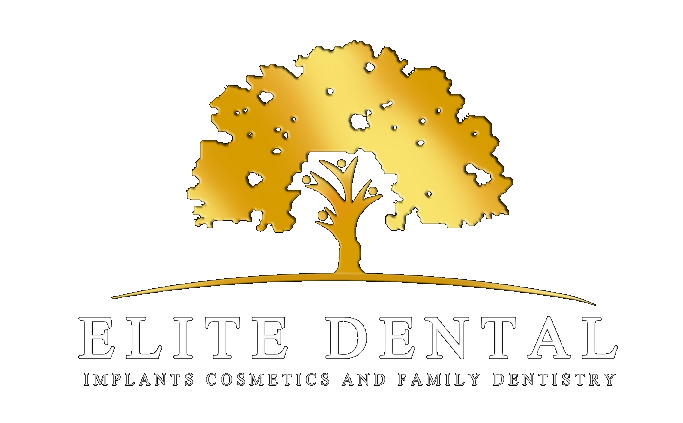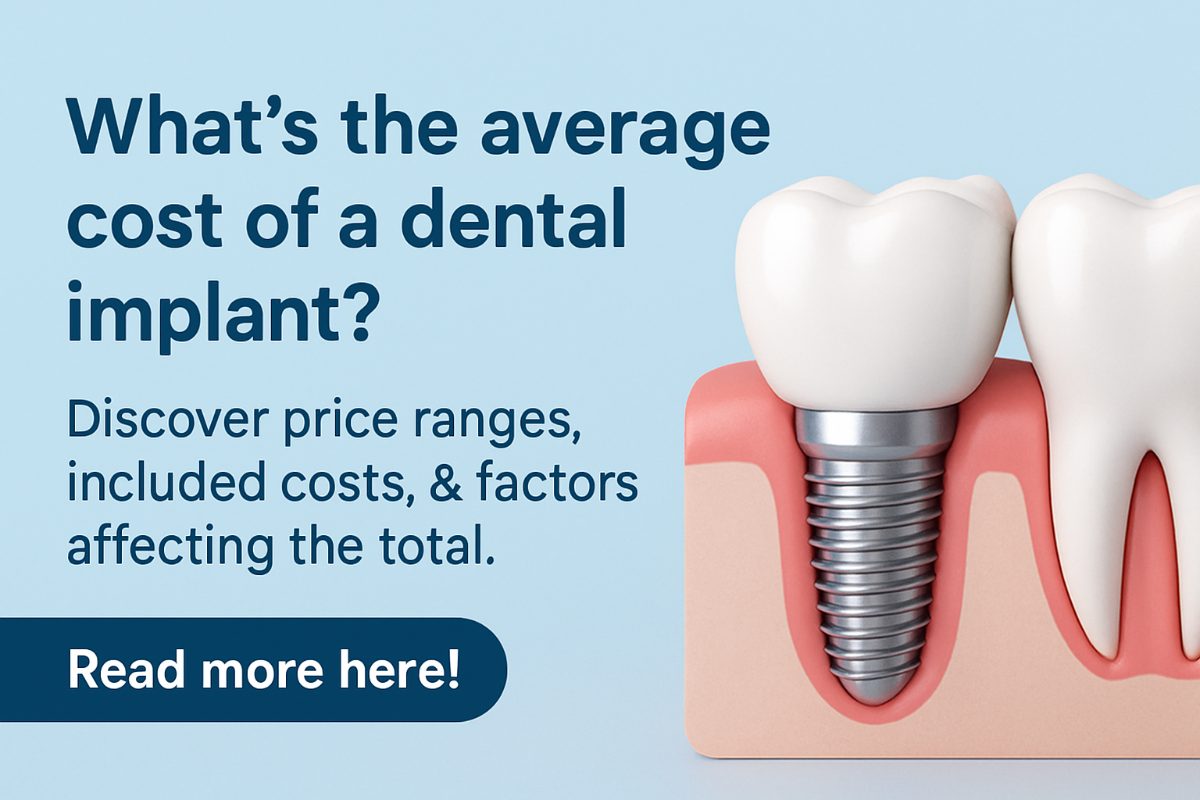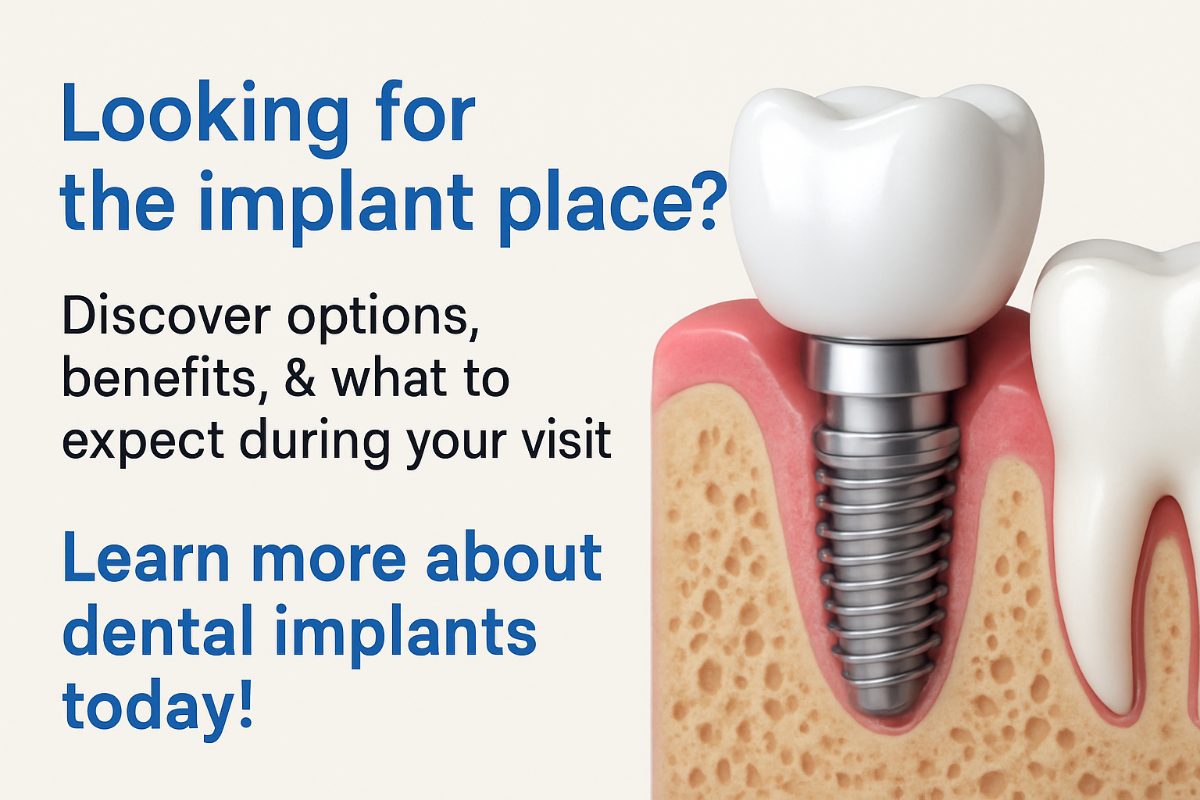Dental Blog - Greater San Antonio
Tips, Facts, And The
Latest In Dentistry

Missing Molars Options: The Complete Guide To Replacing Back Teeth

Missing back teeth change how you eat, speak, and feel. This guide covers the most common missing molars options in Greater San Antonio, what each choice involves, the risks of waiting, and how to pick the right path for your mouth and budget. Read on to compare implants, bridges, and dentures, learn what to expect during treatment, and find the next step to restore function and comfort.
Why missing molars matter
Molars do most of the heavy chewing. Losing them can make eating painful, change your bite, and make it harder to speak clearly. Over time neighboring teeth may shift into the open space, causing misalignment and extra wear. Lack of chewing force also leads to jawbone shrinkage (resorption), which can make future replacement harder and more expensive if left untreated.
Top missing molars options and how they compare
Dental implant with a crown
A dental implant is a titanium post placed in the jaw to act like a tooth root, topped with a crown. Implants preserve bone, feel and function like natural teeth, and can last decades with good care. Timeline is usually several months (placement, healing, crown). Best candidates have good bone and gum health or can receive grafting if needed.
Fixed dental bridge
A fixed bridge uses crowns on the teeth next to the gap to support a false tooth. It’s faster than an implant and avoids surgery, but it requires shaving healthy adjacent teeth and does not stop bone loss at the extraction site. Bridges are a solid choice when implants aren’t possible or when speed and cost are priorities.
Removable partial denture
A removable partial denture is a cost-effective, non-invasive option that clips onto remaining teeth. It’s easy to adjust and replace, making it good for temporary needs or tight budgets. Downsides include less stability, possible discomfort, and daily removal for cleaning.
Do nothing vs. temporary solutions
Some people delay treatment with temporary crowns or flippers. Short-term solutions can work for a while but increase the risk of shifting teeth, bite problems, and bone loss. Generally, the longer you wait, the more complex and costly future treatment can become.
How we decide the best option
Oral health and bone volume
Gum disease, decay, and jawbone volume shape your choices. Active gum disease must be treated first. If bone is low, options may include bone grafting before an implant. A CBCT scan helps measure bone and plan safe implant placement.
Patient goals, timeline, and budget
We match treatment to what matters most: a long-term, natural-feeling result (often implants), a faster solution (bridges), or a lower-cost route (dentures). Recovery time, cosmetic goals, and finances all guide the recommendation.
What to expect during implant treatment for a missing molar
Expect a consult and imaging (often CBCT), then implant treatment under local anesthesia. After placement comes a healing period for osseointegration (weeks to months). Once healed, your dentist attaches an abutment and custom crown. Recovery is usually mild, with short-term swelling and discomfort managed with simple pain control and care instructions.
Cost, insurance, and financing basics
Implants are typically the most expensive upfront but offer long-term value. Bridges sit in the middle, and removable partials are usually least costly. Many dental plans limit coverage for implants; financing, monthly payment plans, and third-party lenders are common ways patients afford treatment.
Why consider Elite Dental & Implant Center for missing molars options
Dr. Mohan Jaganathan and Dr. Veena Raja bring strong implant expertise and advanced training. Serving Greater San Antonio, the practice uses CBCT imaging and an on-site lab to plan precise, faster treatment. Their team blends experience with a patient-first approach to help you choose the best option.
Next steps — how to get started
To review your missing molars options in Greater San Antonio, schedule a consult for an oral exam and CBCT. We’ll answer your questions, review costs and timelines, and build a personalized plan to restore comfort and chewing function.





